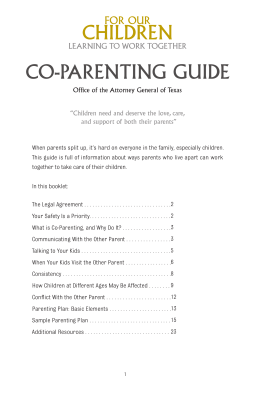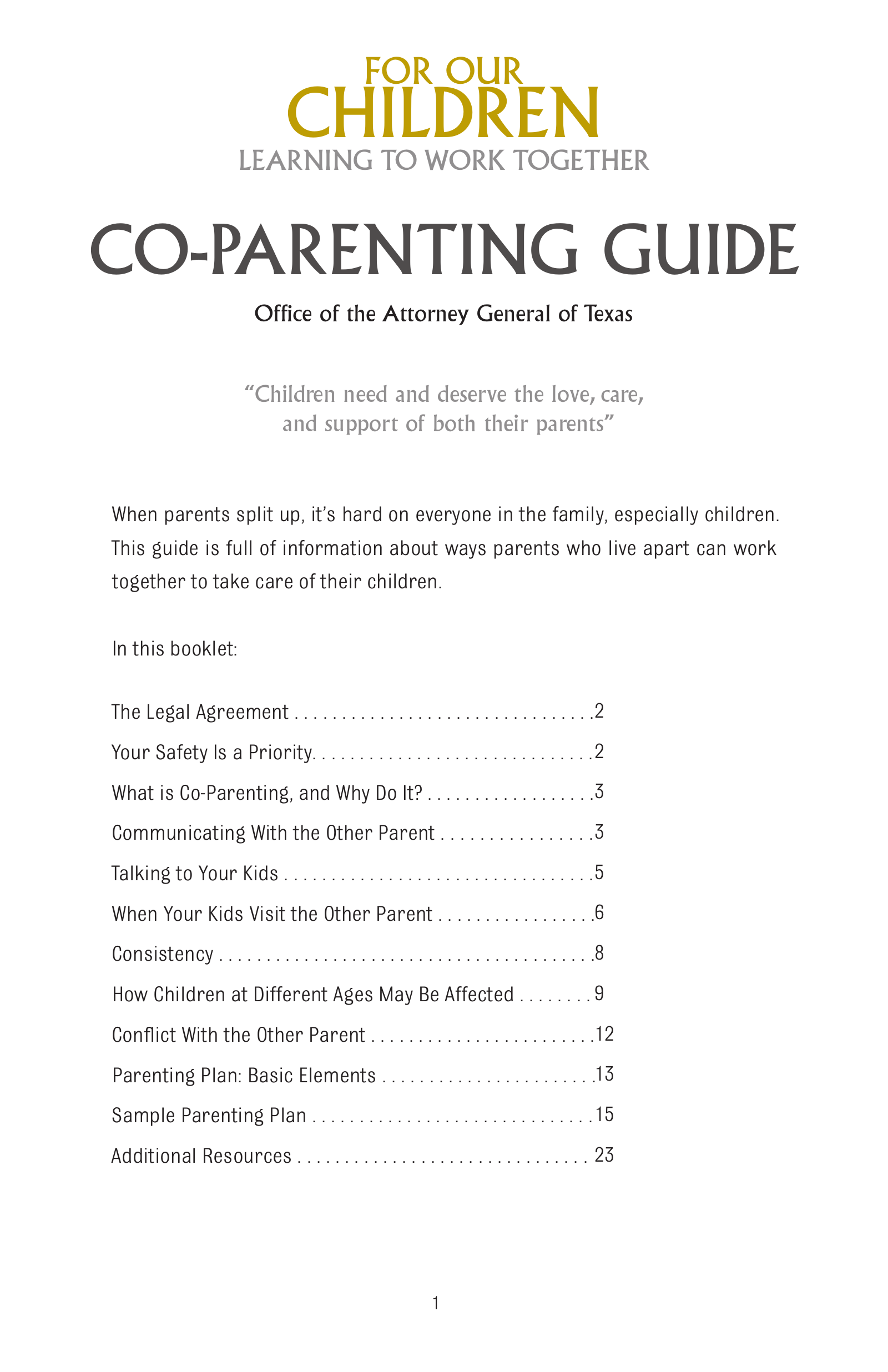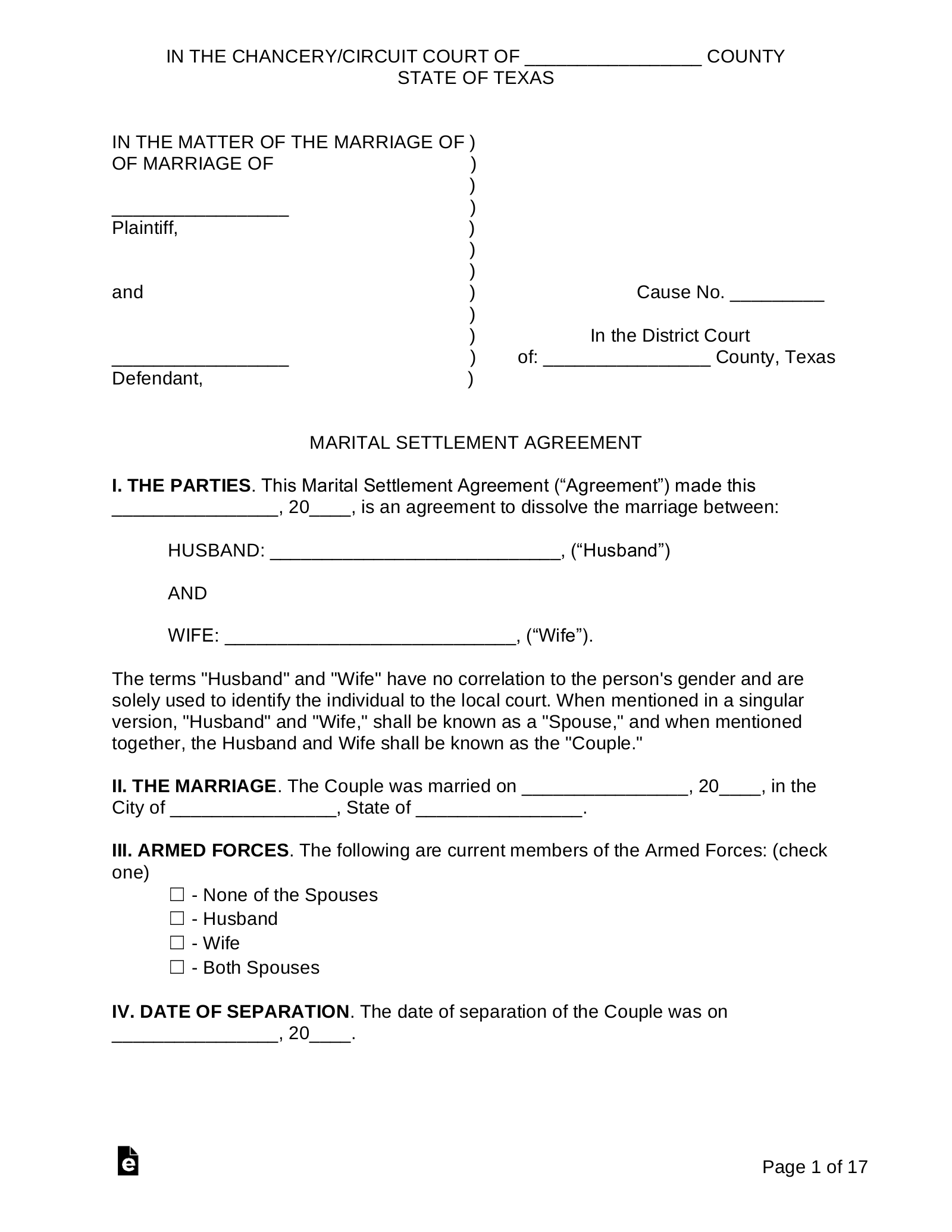Updated September 22, 2023
A Texas custody (parenting) plan is a document outlining the rights and responsibilities of each parent as part of a custody order. Legally required in Texas for cases involving a minor child, parents should work together to create a parenting plan that serves the child’s best interest. In Texas, custody is referred to as “conservatorship.”
Child Custody Factors
When determining a custody arrangement to serve the child’s best interest, Texas courts consider a total of 13 factors (§ 263.307), including:
- The child’s age and physical and mental vulnerabilities
- The magnitude, frequency, and circumstances of the harm to the child
- Whether the child has been the victim of repeated harm
- Whether the child is fearful of living in or returning to the child’s home
- The results of psychiatric, psychological, or developmental evaluations
- Whether there is a history of abusive or assaultive conduct by the child’s family or others
- Whether there is a history of substance abuse by the child’s family or others
- Whether the child’s family demonstrates adequate parenting skills, such as providing adequate health care, nurturance for the child’s development, supervision for safety, protection from repeated exposure to violence, and more
Table of Contents |
How to File for Custody in Texas
1. Agree on a Parenting Plan
If parents are able to prepare a parenting plan that they agree on, the court is likely to approve it as long as the custody terms in the plan serve the best interest of the child.
If the parents are unable to agree on a final parenting plan before the 30th day of the date set for trial, either party may file a proposed parenting plan.[1]
2. Calculate Child Support
Use the state’s Monthly Child Support Calculator to estimate how much child support obligation may be ordered by the court. Under the Texas Child Support Guidelines, the court will determine the percentage of the non-custodial parent’s income to be allocated for child support.[2]
3. Fill Out the Required Forms
Complete the Petition in Suit Affecting the Parent-Child Relationship (SACPR) if the parents are not married.
If the parents are married, the custody case will be considered as part of the divorce proceedings.
To open a divorce case, complete the following forms:
4. File the Forms
File the completed forms via eFileTexas or in person at the appropriate district clerk’s office. The filing fee varies by county. To apply for a fee waiver, fill out and bring a Statement of Inability to Afford Payment of Court Costs.
Send a certified copy of the petition to the Attorney General’s Office if the child has received state benefits, such as Medicaid or food stamps.
Serve the respondent party after the forms have been filed.
5. Attend Hearing
If the court finds that the agreed parenting plan is not in the child’s best interest, the court may request the parents to submit a revised parenting plan. If the revised parenting plan is not deemed satisfactory by the court, the court may order a parenting plan as it sees fit.[3]
6. Receive Court Order
Once finalized by the court, the custody order becomes legally binding until the child turns 18 unless the order is modified with the court’s approval. Obtain a copy of the final order for personal recordkeeping.
Custody Laws
- Child’s preference: The court may interview the child to consider their preference with regard to custody.[4]
- Parenting plan: § 153.007, §§ 153.601 – 153.611
- Parent visitation: §§ 153.3101 – 153.3171
- Rights of grandparents: § 153.432
- Rights of siblings: § 153.551
- Uniform Child Custody Jurisdiction and Enforcement Act: §§ 152.001 – 152.317
Related Forms




